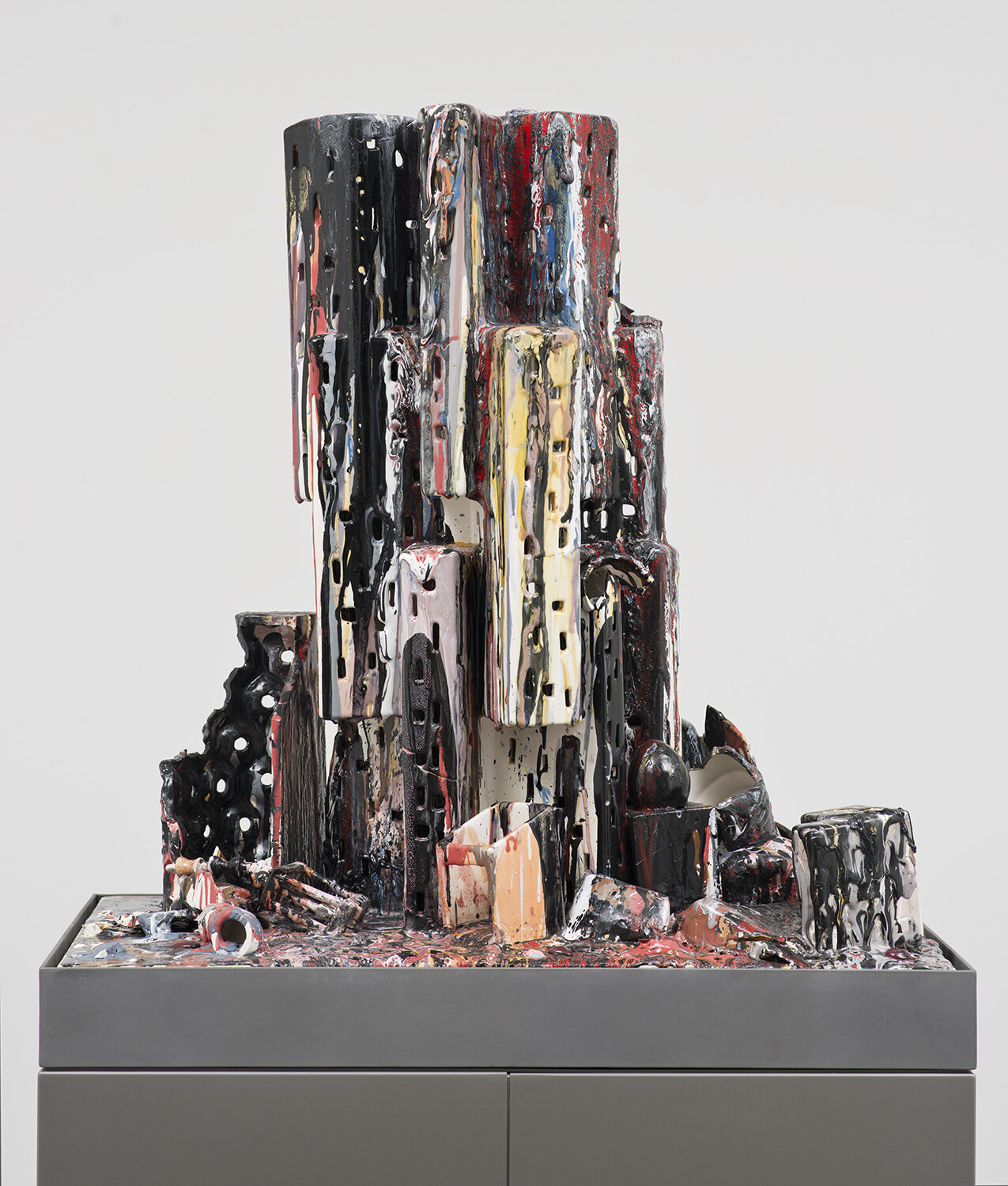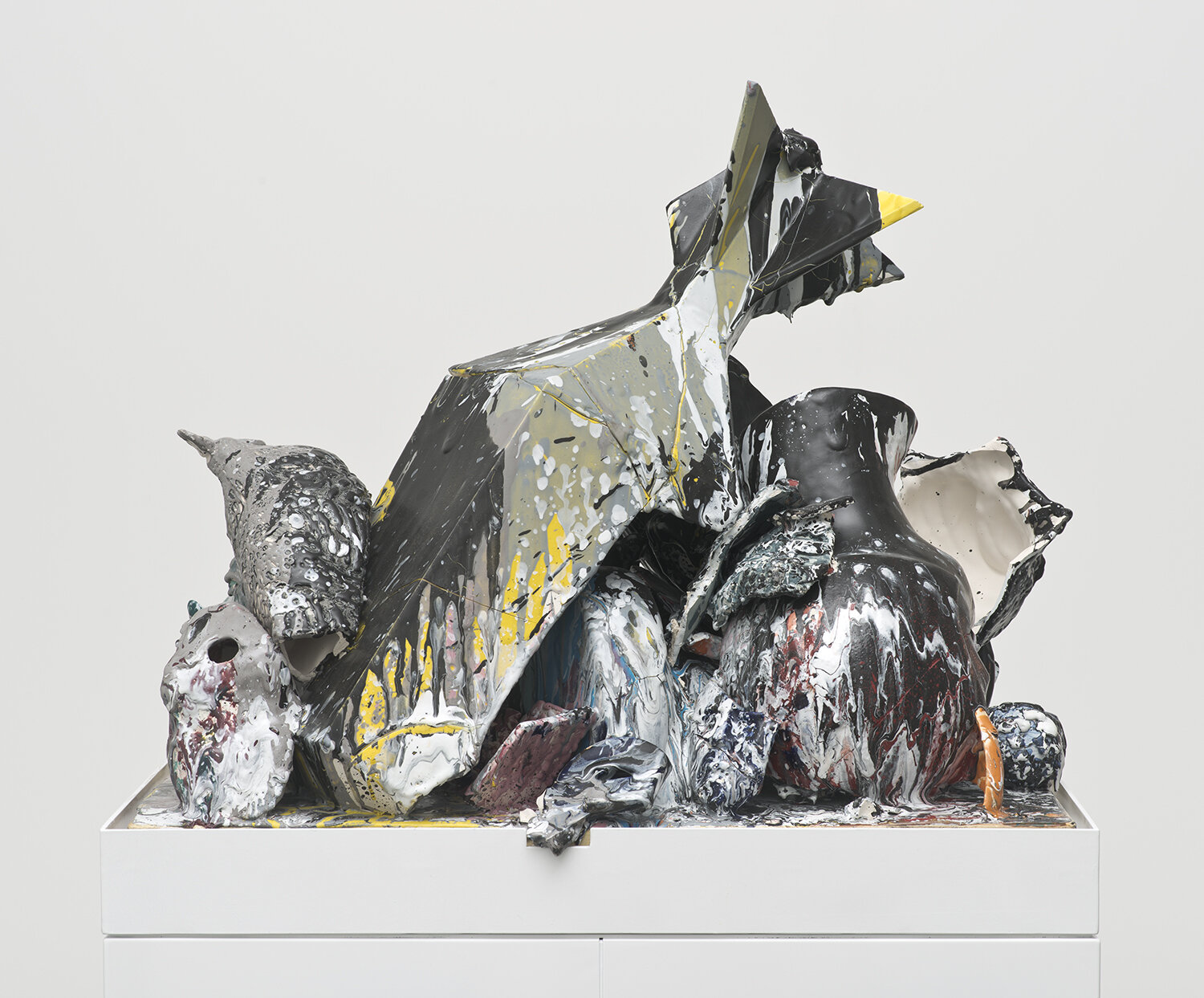Ceramic Works
2013–2015
Cerámica Suro Contemporanea in Guadalajara, Mexico manufactures high-quality ceramics for restaurants and hotels, and specializes in artist’s projects. The ceramics factory is located in the Jalisco region, which is known for its high-fire ceramics process introduced in the 1950s and 1960s. This process was made profitable for global export because of both the artisanal tradition specific to the region and lower labor wages in Mexico in comparison to the US and Europe. The export of ceramics further expanded with the adoption of the North American Free Trade Agreement in 1994.
Guadalajara itself has a unique and curious colonial history, even its name is a collage of historical occupations. Named by the conquistadores after the Spanish city of Guadalajara, whose name was derived from the Arabic, وادي الحجارة (wādī al-ḥajārah), meaning “valley of stones,” a remnant of the Spanish city’s occupation by the North African Berbers (a group from whom I am descended). The phrase “valley of stones” rhymes with the accumulation of the rubble of history that is ever present in Guadalajara, Mexico, torn between colonial powers, with remnants of its repeated occupation and exploitation of global forces ever present, it contains a rich layering of the various historical moments it and its people have suffered through.
Hospicio Cabañas Works
2013/2015
The first Hospicio Cabañas ceramic works were produced at Cerámica Suro over 15 days in August 2013, and took their inspiration from the 57 murals of José Clemente Orozco at the Hospicio Cabañas completed in 1939, located at the center of Guadalajara’s downtown.
The Orozco murals are an unflinching look at the history of Mexico, from the pre-Columbian era, through Spanish colonization, to independence. Orozco combined history painting with modernist strategies of fragmentation, flattening of the picture plane, and abstraction, in a magical realist depiction of a nation caught in the grips of shifting global forces and domestic unrest. What is particularly compelling about Orozco’s murals is the combination of high modernist abstraction and political history, a moving and formally radical treatment in the vein of Guernica, yet of unparalleled monumental scale (filling the entire expansive main chapel). Significant as Orozco’s work is, it remains under-represented in the history of art.
One of the governing motifs of the Orozco murals at Hospicio Cabañas is bodily fragmentation and distortion (the bodies of the Aztecs are broken apart often merging into stone and rubble, the suits of armor of the conquistadores are depicted as geared metal machines, their horses appear like steam engines spewing smoke and fire), and Mexican history is represented as an accumulation of rubble, traces of the myriad superpowers that interfered in the development of the state for their own benefit (from Spain, to France, and finally the United States) creating layers of historical detritus that his figures trudge over and through. Rather brilliantly, Orozco understood the formal tenets of modernity (flatness, fragmentation, and abstraction) as continuous with the industrialization of not only the production of goods, but of the waging of war, the distribution of propaganda, and the flexing of imperial might. He rendered all this as a singular modernist gesture.
Working solely from the ceramic slip cast remnant storage at the factory, a thorough archive of the previous production of designer ceramics and artists’ projects undertaken by the factory—and bringing to mind the detritus depicted in the Orozco murals just a few miles away, a similar debris left in the wake of Mexico’s trade with wealthier partners—these broken remnants and partially constructed slip casts were compiled onto standard-sized firing plates corresponding to the imagery of Orozco’s frescos. Working closely with the colorists at the factory, glaze colors were matched to the colors included in each of the frescos.
Titling Convention:
The titles for the Hospicio Cabañas works reference the José Clemente Orozco murals to which the forms and glaze colors refer, along with the production information of the ceramic sculpture. The date attributed to the work is the year of its first exhibition, which is separate from the production date included in the work’s title. A final description of the work, for example one that would appear on a wall didactic in an exhibition space, might read:
La Ciudad en Llamas y Alegoría (August 28–September 10, 2013: Cerámica Suro Contemporánea, Guadalajara, Jalisco, Mexico)
2013
Cerámica Suro slip cast remnants, glaze, firing plate and steel
31 1/2 x 20 1/2 x 80 inches overall
Here annotated:
La Ciudad en Llamas y Alegoría [title of referenced Orozco mural] (August 28–September 10, 2013 [dates of ceramic production]: Cerámica Suro Contemporánea, Guadalajara, Jalisco, Mexico [name and place of ceramic production])
2013 [date of first exhibition]
Cerámica Suro slip cast remnants, glaze, firing plate, and steel [media]
31 1/2 x 20 1/2 x 80 inches [dimensions including base pedestal]
Aggregate Works
2013–2015
The Aggregate works are produced using remnants of the productions of Cerámica Suro Contemporanea in Guadalajara, Mexico, including spare slip casts, broken ceramics, and unused glazes left over from previous commissions and artist’s projects.
Titling Convention:
The titles for the Aggregate works include the production information of the ceramic. A final description of the work, for example one that would appear on a wall didactic in an exhibition space, might read:
Aggregate XXVI (August 21–23, 2013: Cerámica Suro Contemporánea, Guadalajara, Jalisco, Mexico)
2013
Cerámica Suro slip cast remnants, glaze, firing plate and steel
33 1/4 x 23 x 28 1/2 inches
Here annotated:
Aggregate XXVI (August 21–23, 2013 [dates of ceramic production]: Cerámica Suro Contemporánea, Guadalajara, Jalisco, Mexico [name and place of ceramic production])
2013 [date of first exhibition]
Cerámica Suro slip cast remnants, glaze, firing plate, and steel [media]
33 1/4 x 23 x 28 1/2 inches [dimensions including base pedestal]


